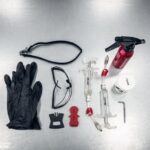How To Use Honing Guide is essential for woodworkers and DIY enthusiasts seeking to achieve razor-sharp edges on their tools. At CONDUCT.EDU.VN, we provide comprehensive guidance on achieving precision and consistency in sharpening, leading to improved woodworking results. By mastering honing techniques, you can significantly enhance your craftsmanship.
1. Understanding the Importance of Honing Guides
A honing guide is a tool designed to hold a chisel or plane blade at a consistent angle while sharpening. It eliminates the guesswork and potential for error associated with freehand honing, ensuring a consistently sharp edge.
1.1 What is a Honing Guide?
A honing guide, also known as a sharpening jig, is a device that secures a blade at a predetermined angle, allowing the user to maintain that angle as they move the blade across a sharpening stone.
1.2 Why Use a Honing Guide?
Using a honing guide offers several advantages:
- Consistency: Maintains a precise angle for consistent sharpening.
- Accuracy: Reduces the risk of rounding the edge or creating uneven bevels.
- Efficiency: Simplifies the sharpening process, especially for beginners.
- Safety: Keeps fingers away from the blade’s edge during sharpening.
1.3 Handheld Honing vs. Honing Guide
While some experienced woodworkers prefer handheld honing, it requires a high degree of skill and practice. Here’s a comparison:
| Feature | Handheld Honing | Honing Guide |
|---|---|---|
| Skill Level | Requires extensive experience and muscle memory | Easier for beginners to achieve consistent results |
| Accuracy | Higher risk of inconsistent angles and rounding edges | Precise and repeatable angles |
| Time Efficiency | Can be faster with experience | May require setup time |
| Learning Curve | Steep | Gradual |
| Ideal For | Professionals who sharpen tools frequently | Hobbyists and those seeking consistent results |
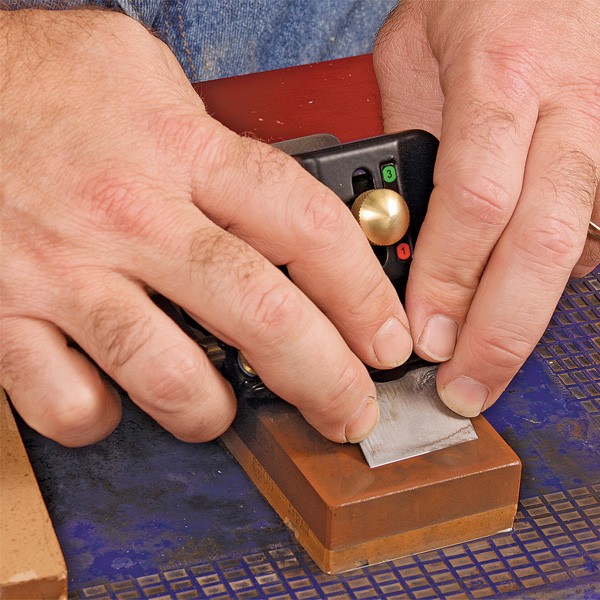
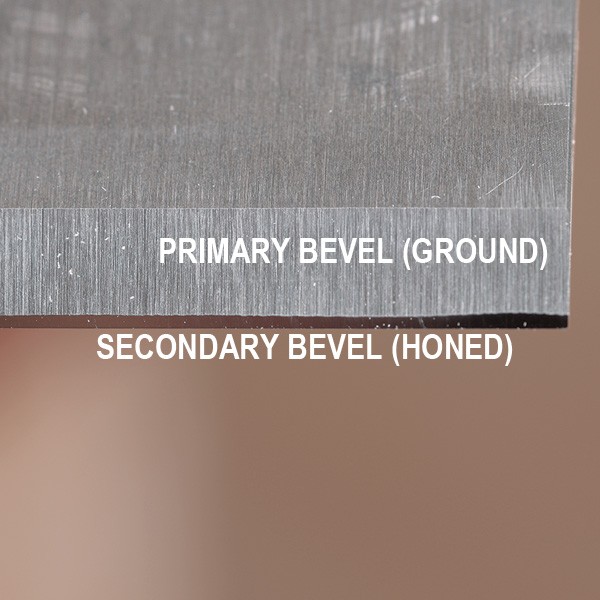
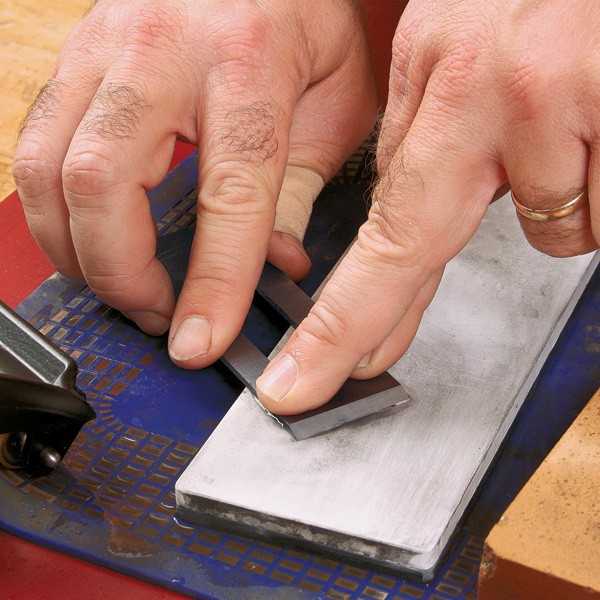
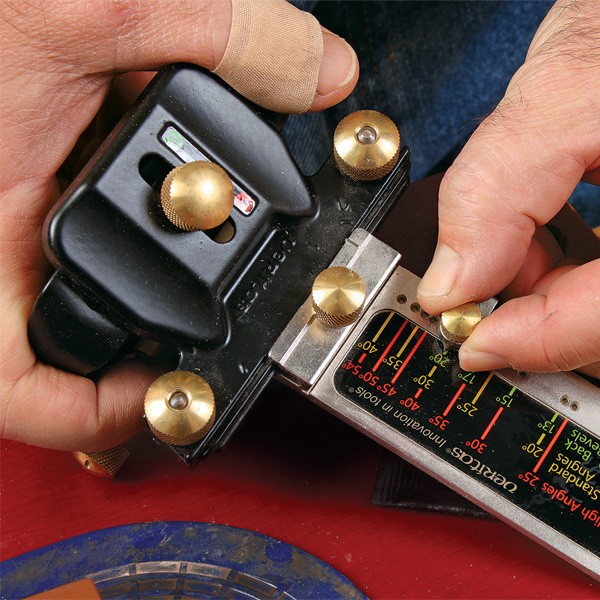
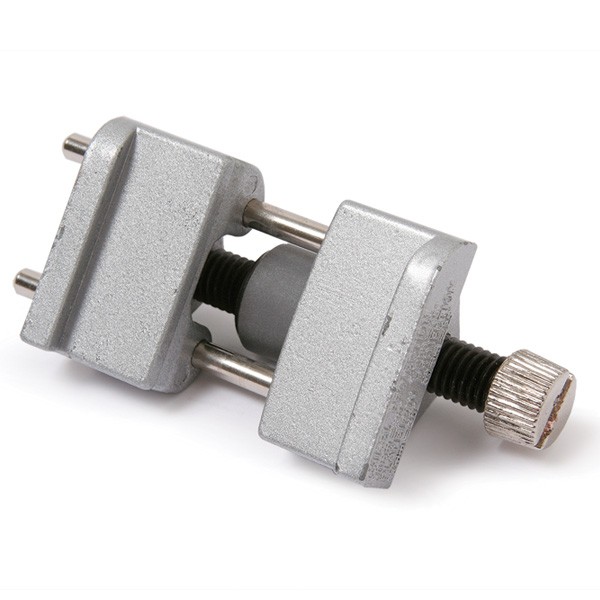
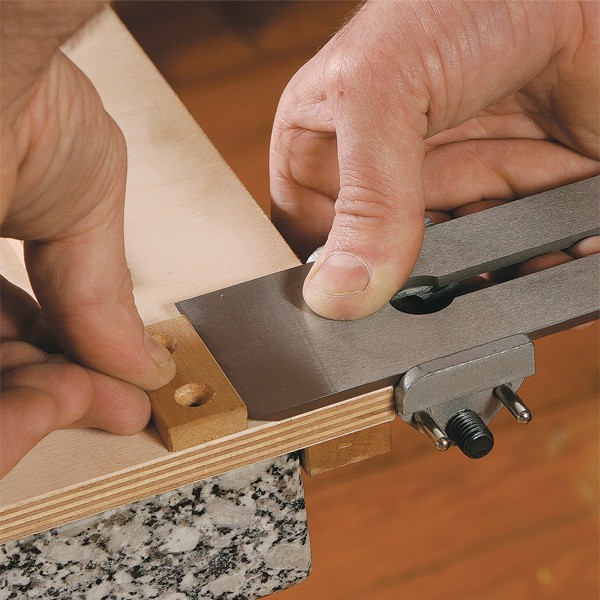
1.4 Addressing the Challenges of Handheld Honing
Handheld honing relies heavily on the user’s ability to maintain a consistent angle. This can be challenging, especially for those new to woodworking. Common issues include:
- Rocking the Blade: Leads to rounded edges and uneven bevels.
- Inconsistent Pressure: Results in uneven sharpening across the blade’s width.
- Fatigue: Maintaining a steady angle can be tiring, especially during prolonged sharpening sessions.
2. Types of Honing Guides
There are two primary types of honing guides: roller guides and fixed-angle guides. Each has its own advantages and disadvantages, making them suitable for different users and applications.
2.1 Roller Guides
Roller guides feature a roller that runs along the sharpening stone, allowing the user to move the blade back and forth while maintaining a consistent angle.
2.1.1 Advantages of Roller Guides
- Ease of Use: Simple to set up and use, making them ideal for beginners.
- Versatility: Can accommodate a wide range of blade sizes and shapes.
- Smooth Movement: The roller provides smooth and consistent movement across the sharpening stone.
2.1.2 Disadvantages of Roller Guides
- Potential for Slippage: The roller can sometimes slip, leading to inconsistencies in the sharpening angle.
- Stone Thickness Variation: Variations in sharpening stone thickness can affect the honing angle.
2.2 Fixed-Angle Guides
Fixed-angle guides hold the blade at a specific, predetermined angle. These guides offer exceptional precision and repeatability.
2.2.1 Advantages of Fixed-Angle Guides
- High Precision: Ensures the blade is sharpened at the exact desired angle.
- Repeatability: Allows for consistent sharpening every time.
- Stability: The fixed design minimizes the risk of slippage or movement during sharpening.
2.2.2 Disadvantages of Fixed-Angle Guides
- Limited Angle Options: May only offer a limited number of pre-set angles.
- Less Versatile: May not accommodate all blade sizes and shapes.
- Higher Cost: Typically more expensive than roller guides.
2.3 Choosing the Right Honing Guide
Consider the following factors when choosing a honing guide:
- Skill Level: Beginners may prefer roller guides, while experienced users may opt for fixed-angle guides.
- Blade Types: Ensure the guide can accommodate the types of blades you need to sharpen.
- Angle Requirements: Choose a guide that offers the angles you commonly use.
- Budget: Honing guides range in price, so set a budget before you start shopping.
3. Essential Tools and Materials
In addition to a honing guide, you’ll need a few other tools and materials to effectively sharpen your blades.
3.1 Sharpening Stones
Sharpening stones are the abrasive surfaces used to remove material from the blade and create a sharp edge. They come in various grits, each serving a specific purpose.
3.1.1 Types of Sharpening Stones
- Water Stones: Require water as a lubricant. They cut quickly and produce a very fine edge.
- Oil Stones: Use oil as a lubricant. They are more durable than water stones but cut more slowly.
- Diamond Stones: Use diamonds as the abrasive. They are very hard and can sharpen almost any material.
- Ceramic Stones: Made from synthetic materials. They offer a good balance of cutting speed and durability.
3.1.2 Grit Selection
Choose a grit progression that matches the condition of your blades. A typical progression might include:
- Coarse Grit (200-400): For repairing damaged blades or establishing a new bevel.
- Medium Grit (1000-2000): For general sharpening and refining the edge.
- Fine Grit (4000-8000): For polishing the edge and achieving maximum sharpness.
3.2 Honing Solution
A honing solution, such as water or oil, is used to lubricate the sharpening stone and prevent it from clogging with metal particles.
3.2.1 Water as a Honing Solution
Water is a common and effective honing solution for water stones. It helps to keep the stone clean and cool.
3.2.2 Oil as a Honing Solution
Oil is used with oil stones. It provides lubrication and helps to prevent the stone from rusting.
3.3 Lapping Plate
A lapping plate is a flat, abrasive surface used to flatten sharpening stones. This is essential for maintaining the flatness of your stones and ensuring consistent sharpening.
3.4 Cleaning Supplies
Keep your sharpening stones and honing guide clean to ensure optimal performance. Use a brush or cloth to remove metal particles and debris.
4. Setting Up Your Honing Guide
Proper setup is crucial for achieving accurate and consistent sharpening results.
4.1 Preparing the Blade
Before inserting the blade into the honing guide, ensure it is clean and free of rust or debris.
4.2 Adjusting the Honing Angle
Most honing guides allow you to adjust the sharpening angle. Consult the manufacturer’s instructions for specific details.
4.2.1 Determining the Correct Angle
The optimal sharpening angle depends on the type of blade and its intended use. Common angles include:
- Chisels: 25-30 degrees
- Plane Blades: 25-35 degrees
- Knives: 15-20 degrees
4.2.2 Using an Angle Gauge
An angle gauge can help you accurately set the honing angle. Place the gauge against the blade and adjust the honing guide until the desired angle is achieved.
4.3 Securing the Blade
Once the angle is set, securely tighten the blade in the honing guide. Ensure the blade is centered and aligned correctly.
4.4 Testing the Setup
Before you begin sharpening, test the setup by running the honing guide along the sharpening stone. Check to ensure the blade is making consistent contact with the stone.
5. The Sharpening Process: Step-by-Step
Follow these steps to achieve a razor-sharp edge using a honing guide.
5.1 Preparing the Sharpening Stone
Before you begin sharpening, prepare your sharpening stone by:
- Soaking (for water stones): Soak the stone in water for the recommended time.
- Applying Honing Solution: Apply a generous amount of honing solution to the stone’s surface.
5.2 Initial Sharpening (Coarse Grit)
If the blade is damaged or dull, start with a coarse-grit sharpening stone to remove material and establish a new bevel.
5.2.1 Applying Pressure
Apply moderate pressure to the blade as you move it back and forth across the stone.
5.2.2 Maintaining a Consistent Stroke
Use a smooth, consistent stroke to ensure even sharpening.
5.2.3 Checking Progress
Periodically check the blade’s edge to monitor your progress. Look for a consistent bevel and the removal of any imperfections.
5.3 Refining the Edge (Medium Grit)
Once you’ve established a bevel with the coarse-grit stone, switch to a medium-grit stone to refine the edge.
5.3.1 Reducing Pressure
Reduce the pressure as you move to finer grits.
5.3.2 Increasing Stroke Frequency
Increase the frequency of your strokes to create a smoother, more polished edge.
5.4 Polishing the Edge (Fine Grit)
Finally, use a fine-grit sharpening stone to polish the edge and achieve maximum sharpness.
5.4.1 Minimal Pressure
Apply minimal pressure to avoid rounding the edge.
5.4.2 Light Strokes
Use light, rapid strokes to polish the edge.
5.5 Removing the Burr
As you sharpen, a small burr (a thin, wire-like edge) will form on the back of the blade. Remove the burr by:
- Stropping: Stropping the blade on a leather strop.
- Light Honing: Lightly honing the back of the blade on a fine-grit stone.
5.6 Testing Sharpness
Test the sharpness of your blade by:
- Paper Test: Attempting to slice through a piece of paper. A sharp blade should slice cleanly and easily.
- Hair Test: Attempting to shave hairs from your arm. A razor-sharp blade should shave effortlessly.
6. Advanced Honing Techniques
Once you’ve mastered the basics of honing, you can explore advanced techniques to further refine your sharpening skills.
6.1 Honing Curved Blades
Honing curved blades, such as those found on gouges and carving tools, requires a slightly different approach.
6.1.1 Using a Curved Honing Stone
Use a curved honing stone that matches the profile of the blade.
6.1.2 Rolling the Blade
Roll the blade along the curved stone, maintaining consistent contact and pressure.
6.2 Micro-Beveling
Micro-beveling involves creating a very small secondary bevel at the tip of the blade. This can improve the blade’s durability and cutting performance.
6.2.1 Increasing the Honing Angle
Slightly increase the honing angle to create a micro-bevel.
6.2.2 Light Polishing
Lightly polish the micro-bevel with a fine-grit stone.
6.3 Using a Leather Strop
A leather strop is a strip of leather used to polish the blade and remove the burr.
6.3.1 Applying Polishing Compound
Apply a small amount of polishing compound to the strop.
6.3.2 Stropping the Blade
Strop the blade by dragging it across the strop, away from the cutting edge.
7. Maintenance and Care
Proper maintenance and care will extend the life of your honing guide and sharpening stones.
7.1 Cleaning Honing Stones
Clean your honing stones after each use to remove metal particles and debris.
7.1.1 Using a Scrub Brush
Use a scrub brush and water to clean water stones.
7.1.2 Using a Stone Cleaner
Use a stone cleaner to remove oil from oil stones.
7.2 Flattening Honing Stones
Flatten your honing stones regularly to maintain their flatness.
7.2.1 Using a Lapping Plate
Use a lapping plate and abrasive powder to flatten the stones.
7.2.2 Checking for Flatness
Use a straightedge to check for flatness.
7.3 Storing Honing Stones
Store your honing stones in a safe, dry place to prevent damage.
7.3.1 Using a Storage Box
Use a storage box to protect the stones from dust and moisture.
7.3.2 Avoiding Extreme Temperatures
Avoid storing the stones in extreme temperatures or humidity.
7.4 Maintaining the Honing Guide
Keep your honing guide clean and lubricated to ensure smooth operation.
7.4.1 Cleaning After Use
Clean the honing guide after each use to remove metal particles and debris.
7.4.2 Lubricating Moving Parts
Lubricate the moving parts of the honing guide with a light oil.
8. Common Mistakes to Avoid
Avoid these common mistakes to ensure successful sharpening.
8.1 Using Too Much Pressure
Using too much pressure can damage the blade and the sharpening stone.
8.2 Sharpening at the Wrong Angle
Sharpening at the wrong angle can result in a dull or uneven edge.
8.3 Neglecting to Flatten the Stones
Neglecting to flatten the stones can lead to inconsistent sharpening.
8.4 Not Removing the Burr
Failing to remove the burr will leave the blade feeling dull.
8.5 Using a Dirty Stone
Using a dirty stone can scratch the blade and reduce the stone’s effectiveness.
9. Safety Precautions
Follow these safety precautions when sharpening your blades.
9.1 Wearing Safety Glasses
Wear safety glasses to protect your eyes from metal particles.
9.2 Using a Stable Work Surface
Use a stable work surface to prevent the honing guide from slipping.
9.3 Keeping Fingers Away from the Blade
Keep your fingers away from the blade’s edge to avoid cuts.
9.4 Concentrating on the Task
Concentrate on the task at hand to avoid accidents.
10. Enhancing Your Woodworking with Sharp Tools
Sharp tools are essential for achieving clean, precise cuts and improving the overall quality of your woodworking projects. By mastering the art of sharpening with a honing guide, you can:
- Improve Cut Quality: Achieve cleaner, more precise cuts with less effort.
- Reduce Tear-Out: Minimize tear-out when working with delicate woods.
- Increase Efficiency: Sharper tools require less force, reducing fatigue and increasing productivity.
- Enhance Safety: Sharp tools are safer to use because they require less force and are less likely to slip.
- Preserve Tool Life: Proper sharpening extends the life of your tools by preventing excessive wear and tear.
11. Honing Guide Product Recommendations
11.1 Veritas MK.II Honing Guide
The Veritas MK.II Honing Guide is a popular choice among woodworkers for its precision and versatility. It features a unique clamping mechanism that securely holds blades and allows for easy angle adjustments.
11.1.1 Key Features
- Precise angle adjustments
- Secure blade clamping
- Durable construction
11.1.2 Benefits
- Achieves consistent sharpening results
- Easy to use and set up
- Accommodates a wide range of blade sizes
11.2 Basic Honing Guide
Basic honing guides are an affordable option for beginners. They typically consist of a simple jig with a roller that runs along the sharpening stone.
11.2.1 Key Features
- Affordable price point
- Simple design
- Easy to use
11.2.2 Benefits
- Good starting point for beginners
- Provides consistent sharpening angles
- Lightweight and portable
12. Frequently Asked Questions (FAQs)
12.1 What is the best angle for sharpening chisels?
The best angle for sharpening chisels is typically between 25 and 30 degrees, depending on the type of chisel and its intended use.
12.2 How often should I sharpen my blades?
You should sharpen your blades whenever they become dull or difficult to use. The frequency of sharpening depends on the type of wood you are working with and the amount of use the blade receives.
12.3 Can I use a honing guide with any type of sharpening stone?
Yes, you can use a honing guide with most types of sharpening stones, including water stones, oil stones, diamond stones, and ceramic stones.
12.4 How do I flatten my sharpening stones?
You can flatten your sharpening stones using a lapping plate and abrasive powder. Simply rub the stone against the lapping plate until it is flat.
12.5 What is the purpose of honing solution?
Honing solution is used to lubricate the sharpening stone and prevent it from clogging with metal particles. It also helps to keep the stone cool and prevent it from overheating.
12.6 How do I remove rust from my blades?
You can remove rust from your blades using a rust remover or by rubbing the blade with fine steel wool.
12.7 Can I use a honing guide to sharpen knives?
Yes, you can use a honing guide to sharpen knives. However, you may need to use a smaller honing guide or adjust the angle to accommodate the knife blade.
12.8 What is the difference between honing and sharpening?
Honing refers to the process of polishing the edge of a blade to remove the burr and achieve maximum sharpness. Sharpening refers to the process of removing material from the blade to create a new bevel.
12.9 How do I know when my blade is sharp enough?
You can test the sharpness of your blade by attempting to slice through a piece of paper or by attempting to shave hairs from your arm. A sharp blade should slice cleanly and easily.
12.10 What are the benefits of using sharp tools?
The benefits of using sharp tools include improved cut quality, reduced tear-out, increased efficiency, enhanced safety, and preserved tool life.
13. Conclusion
Mastering how to use honing guide techniques is essential for any woodworker or DIY enthusiast who wants to achieve razor-sharp edges on their tools. By following the steps outlined in this guide, you can achieve consistent and accurate sharpening results, leading to improved woodworking projects and a more enjoyable experience.
Remember, achieving proficiency in sharpening takes time and practice. Be patient with yourself, and don’t be afraid to experiment with different techniques and sharpening stones to find what works best for you. And for more detailed guidance and resources on ethical conduct and best practices, visit CONDUCT.EDU.VN, your trusted source for educational and professional standards. For additional information, please contact us at 100 Ethics Plaza, Guideline City, CA 90210, United States. You can also reach us via Whatsapp at +1 (707) 555-1234 or visit our website at CONDUCT.EDU.VN. Sharpening your tools isn’t just about maintaining equipment; it’s about upholding a standard of excellence in your craft.
Alt: Preparing a secondary bevel on a chisel using a sharpening stone and honing guide, illustrating the precision required for achieving a sharp edge.
Alt: Comparing ground and honed bevels on a chisel, highlighting the difference in edge quality achieved through proper sharpening techniques.
Alt: Final step in sharpening, removing the burr from the back of the blade using a fine sharpening stone, crucial for achieving a razor-sharp edge.
Alt: Close-up of the Veritas MK. II Honing Guide, demonstrating its attachment for locking in a wide range of bevel angles, ensuring precision.
Alt: A basic honing guide with a setup board, illustrating how to quickly set the blade protrusion for achieving common sharpening angles efficiently.
Alt: Setting up a honing guide for a given angle using a protractor and a stop block to ensure repeatability and accuracy in future sharpening sessions.
Is finding reliable information on ethical standards challenging? Are you unsure how to apply conduct rules in specific situations? Visit conduct.edu.vn today for comprehensive guides and resources designed to help you navigate ethical dilemmas confidently.
